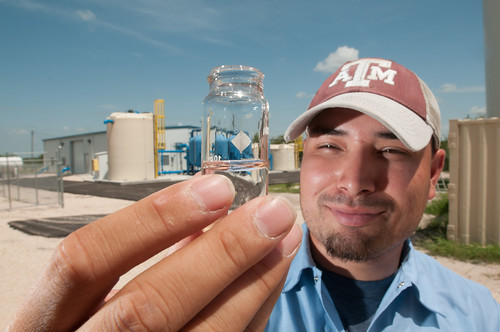
Arsenic is poisonous. It is also just about everywhere, but it is especially prevalent in the groundwater of the Southwest. In the economically challenged City of Freer, Texas, citizens rely on the Freer Water Control and Improvement District (FWCID) to draw water from the underground Catahoula aquifer and deliver safe drinking water. Naturally occurring arsenic levels have remained constant in the region for more than a century. Then, the Environmental Protection Agency’s new national standards took effect and the City of Freer turned to FWCID to take action.
Aided by financial assistance from the USDA Water and Environmental Program, the FWCID has completed a two-phase approach to meeting the district’s water supply and public safety needs. FWCID first received USDA funding to drill two new water wells, each rated at 167 gallons per minute (now a total of eight wells); 13,600 feet of well collection lines; and 15,000 linear feet of well control line to remotely control the wells, and the delivery of raw water from the well site's million-gallon holding tank to the new Arsenic Removal System (Phase II). Previously, water flow was manually controlled by FWCID personnel and gravity fed from the well facility to its customers.
Phase II was funded through a combination USDA loan and grant, which provided for the customized arsenic removal system. It includes a new building on a ¾ acre site, and houses the operations room, computer and power system, laboratory room, and pump systems. The entire operation can be monitored through a desktop computer system. The computer-controlled system activates remote well site pumps and valves to supply raw water to the new site, where pumps work in sequence to maintain a consistent pressure to the system when needed. Raw water is pumped through an arsenic removal absorber tank, and then the processed water goes to ground level storage tanks that feed the residential and industrial needs of the city. During the summer, FWCID delivers 750,000 gallons of water a day to more than 1,200 taps. Samples of water are periodically tested; and so far the arsenic levels have been a small fraction of 1 part per billion (PPB), well below the current limit of 10 PPB.
Thanks to the efforts of USDA, local and State personnel, Freer residents have a reliable and safe water source.
To find out more about USDA Rural Development programs and how they can assist your community in meeting its goals click here. To see more photos, go to http://flic.kr/s/aHsjHbMNfr

